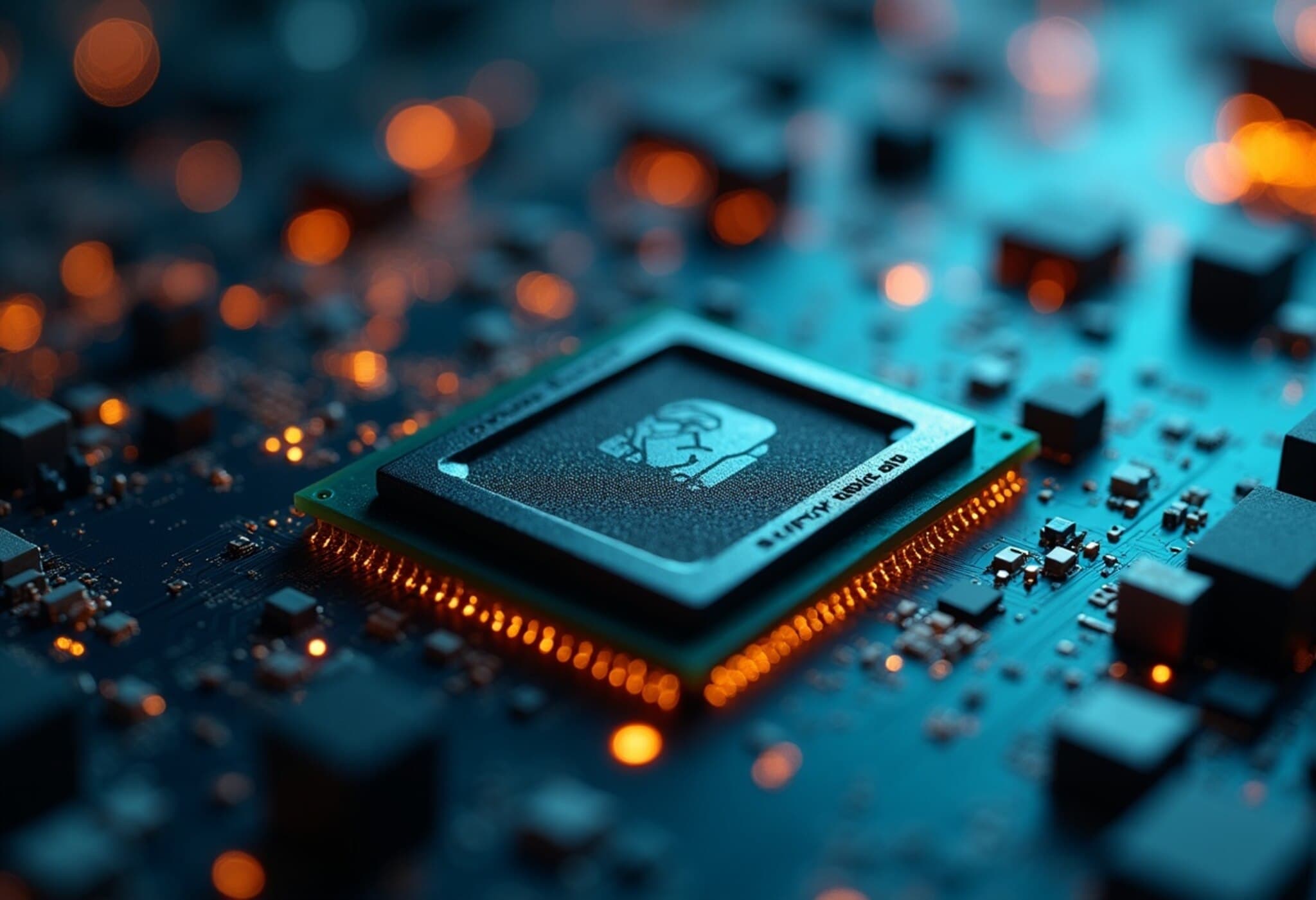Nvidia’s Latest Earnings Highlight Strong AI Momentum but Uncertainty Looms Over China
Nvidia’s recent earnings report painted a picture of accelerating artificial intelligence (AI) demand, reaffirming its leadership in cutting-edge technology infrastructure. Yet, beneath the surface of soaring sales and positive forecasts, persistent geopolitical tensions with China cast a shadow over the company’s global expansion prospects.
Sales Surge Driven by AI Infrastructure
For the quarter ending recently, Nvidia posted impressive revenue of $46.74 billion, marking a 56% increase compared to the previous year and slightly surpassing Wall Street’s expectations of $46.06 billion. Adjusted earnings per share (EPS) came in at $1.05, also above the anticipated $1.01, underscoring solid financial performance fueled largely by demand for AI chips and data center products.
Despite the upbeat numbers, some investors were cautious, sending Nvidia’s stock lower during the trading day as the company offered limited clarity on its fortunes within the Chinese market—a region seen as crucial for long-term growth.
China’s Complex Regulatory Environment Remains a Key Concern
CEO Jensen Huang acknowledged ongoing challenges describing talks with the U.S. government about easing chip sales restrictions in China. A proposed deal, involving Nvidia channeling 15% of sales in China to the Chinese government, still awaits final approval. Since April, sanctions have blocked Nvidia from marketing key AI chips, like its H100 GPUs, within China, creating a significant hurdle.
For Nvidia, the China market represents a tantalizing opportunity projected to be worth $50 billion this year and potentially growing at an annual pace of 50%. Huang hinted at a “real possibility” to introduce Nvidia’s advanced Blackwell processors in China, but acknowledged the future of the H20 chip—developed specifically for China—is unsettled.
- Management estimates potential H20 chip revenue between $2 billion and $5 billion in the next quarter if geopolitical conditions stabilize.
- Current revenue guidance of $54 billion for the upcoming quarter excludes any H20 sales to China, highlighting ongoing uncertainty.
Data Center Strength and AI Investment Outlook
Nvidia’s data center segment generated $41.1 billion this quarter, growing 56% year-over-year but slightly below analysts’ forecasts for the second consecutive period. While revenue growth slowed to 5% sequentially from 10% the previous quarter, the segment remains a core growth engine driving Nvidia’s AI ambitions.
During the earnings call, Huang passionately described the AI revolution as entering a phase of “full steam,” emphasizing the nascent stage of AI infrastructure deployment. He cited a dramatic increase in capital expenditure—now estimated at $600 billion annually across the top hyperscale cloud providers—with a projected $3 trillion to $4 trillion investment in AI infrastructure expected by decade’s end.
"The scale of opportunity ahead is truly immense," Huang asserted, shedding light on why Nvidia continues to enjoy significant market share gains.
Expert Reactions and Market Interpretation
Analysts at Benchmark maintained a buy rating on Nvidia, viewing the firm's guidance as a "modest upside" over already elevated street estimates. Their report painted Nvidia’s performance as consistent with its strategic objectives and indicative of sustained interest and investment in AI across the industry.
Similarly, JPMorgan analysts highlighted Nvidia’s "solid beat and raise," reinforcing confidence in multiple drivers fueling the company’s growth trajectory amid a robust multi-year AI spending runway.
Gene Munster of Deepwater Management captured the sentiment, noting, "The noise around Nvidia’s China situation this quarter is unlike anything we’ve seen in a mega-cap tech earnings call. The stakes and complexities are extraordinarily high." This underscores how geopolitical risks are becoming inseparable from tech sector valuations and investor sentiment.
Broader Implications for U.S.-China Tech Relations
Nvidia's earnings bring to the forefront larger questions about the future of U.S. technology companies competing in China amidst tightening export controls and diplomatic friction. For policymakers, Nvidia’s scenario exemplifies the delicate balance between national security concerns and the economic benefits derived from cross-border technological exchange.
For American businesses, the outcome of these negotiations could set important precedents on market access, supply chain resilience, and the evolution of global AI ecosystems.
Editor’s Note
Nvidia’s earnings report is a microcosm of today’s complex interplay between technological advancement and geopolitics. While AI continues to fuel remarkable growth and innovation, unresolved tensions with China introduce significant unpredictability. Investors, policymakers, and industry leaders alike will be watching closely as this story unfolds, since its implications resonate far beyond Nvidia, affecting global technology landscapes and economic diplomacy. How Nvidia navigates this geopolitical tightrope may well shape the contours of the global AI race over the next decade.



















